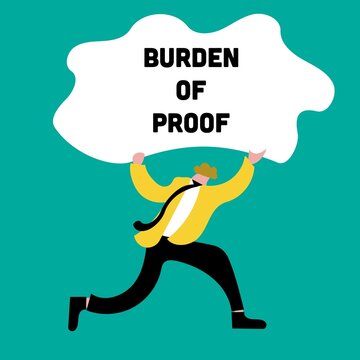Case Study on Burden of Proof According to the Evidence Act, 1872
Case: State of Rajasthan v. Smt. Kalki & Another (1981)
Court: Supreme Court of India
Citation: AIR 1981 SC 1390
Facts of the Case
In State of Rajasthan v. Smt. Kalki, Kalki and another individual were accused of conspiring to murder Kalki's husband. The prosecution claimed that Kalki colluded with the co-accused to commit the crime. The core issue in this case was determining whether the prosecution had proven the case beyond a reasonable doubt as required under the burden of proof provisions in the Evidence Act, 1872.
Legal Issue
The key legal issue in this case centered around the burden of proof under the Evidence Act, specifically:
- Section 101 - The burden of proof lies on the party who asserts the existence of a fact.
- Section 102 - In a suit or proceeding, the burden of proof is on the person who would fail if no evidence were given on either side.
In criminal cases, these sections indicate that the prosecution must establish the accused’s guilt beyond a reasonable doubt, while the accused is not obligated to prove their innocence, although they may present evidence to create reasonable doubt.
Arguments by Prosecution and Defense
Prosecution: Argued that they had circumstantial evidence linking Kalki to the crime and that her behavior suggested her involvement.
Defense: Claimed that the prosecution failed to prove guilt beyond reasonable doubt, arguing that suspicion alone did not meet the standard of proof necessary for conviction.
Judgment
The Supreme Court ruled in favor of the defense, stating that the prosecution did not fulfill the burden of proof in this case. The Court emphasized that suspicion cannot replace proof and reiterated that in criminal cases, the burden to prove guilt always rests with the prosecution under Sections 101 and 102 of the Evidence Act.
Significance of the Judgment
- Burden on Prosecution: In criminal cases, the prosecution must prove guilt beyond a reasonable doubt, ensuring any doubt benefits the accused.
- Role of the Accused: The accused has no obligation to prove their innocence but can present evidence to challenge the prosecution’s claims.
- Suspicion vs. Proof: The judgment underscores that mere suspicion or circumstantial evidence without concrete proof does not satisfy the legal standard for conviction.
Conclusion
This case reinforces that the burden of proof in criminal proceedings rests solely with the prosecution, as laid out in the Evidence Act of 1872. The ruling supports the principle of innocent until proven guilty and underscores the necessity of clear and convincing evidence to secure a conviction.
Additional Relevant Cases
1. Woolmington v. DPP (1935)
In this UK case, the House of Lords held that the prosecution has a duty to prove guilt beyond a reasonable doubt. Lord Sankey’s famous "golden thread" statement affirmed that the burden of proof lies with the prosecution and not the accused, reinforcing the principle followed in the Indian legal system as well.
2. Narayan Govind Gavate v. State of Maharashtra (1977)
This case emphasized the presumption of innocence and highlighted that circumstantial evidence alone does not satisfy the burden of proof unless all facts point exclusively to the accused’s guilt.
3. R. v. Balachandran (1956)
A Malaysian case discussing burden of proof where circumstantial evidence was used. The court ruled that for circumstantial evidence to satisfy the burden of proof, it must conclusively point to guilt without alternative explanations, giving the benefit of the doubt to the accused.

Very Helpful Article
ReplyDelete